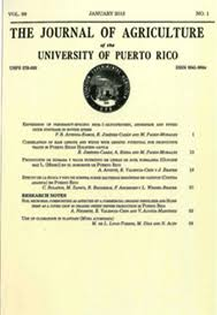Abstract
The objective of this study was to evaluate the population fluctuation of Spodoptera frugiperda (J.E. Smith) (Lepidoptera: Noctuidae) at the larval stage of the different phenological stages of sorghum and its relationship with the type of tillage, climatic conditions and different systems of sorghum use in the Las Tunas, Simón Rodríguez municipality, Anzoátegui state, Venezuela. For this, four systems of use were used: S1 (Sorghum -Stylosanthes brasilianum- Brachiaria dictyoneura); S2 (Sorghum -Centrosema brasilianum - B. dyctioneura); S3 (Sorghum-B. dyctioneura); and S4 (monoculture sorghum) under two types of tillage (light and deep). The determination of the date of occurrence of the phenological stages of the crop was carried out twice a week during the entire crop cycle. The results of the study revealed that population fluctuation of S. frugiperda was not influenced by the system of use, but by the type of tillage, with deep tillage having the highest fluctuation values of the insect population (> 0.80 larvae per plant). There is a clear relationship between these factors of population fluctuation of insect, climatic conditions and the days after sowing; a greater attack of pests occurred in the vegetative period when there were low amounts of daily precipitation and high temperatures.

